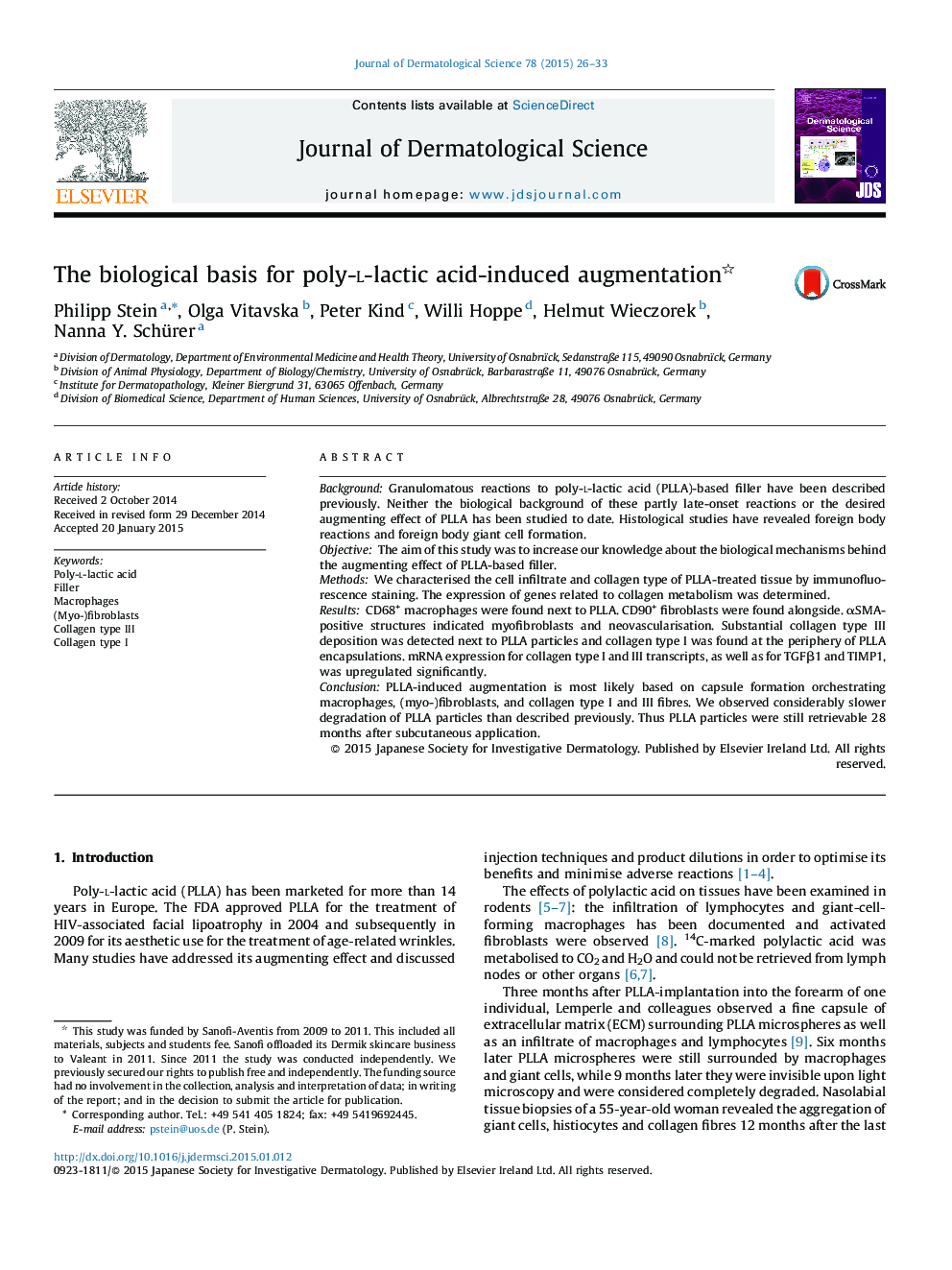| کد مقاله | کد نشریه | سال انتشار | مقاله انگلیسی | نسخه تمام متن |
|---|---|---|---|---|
| 3212639 | 1203189 | 2015 | 8 صفحه PDF | دانلود رایگان |

• Macrophages and fibroblasts were found in close proximity to PLLA particles.
• PLLA was directly encapsulated by collagen type III.
• Type I collagen was found in the periphery of PLLA-induced granulomas.
• Genes of collagen metabolism were up-regulated in PLLA-treated tissue.
• PLLA degradation was considerably slower than described previously.
BackgroundGranulomatous reactions to poly-l-lactic acid (PLLA)-based filler have been described previously. Neither the biological background of these partly late-onset reactions or the desired augmenting effect of PLLA has been studied to date. Histological studies have revealed foreign body reactions and foreign body giant cell formation.ObjectiveThe aim of this study was to increase our knowledge about the biological mechanisms behind the augmenting effect of PLLA-based filler.MethodsWe characterised the cell infiltrate and collagen type of PLLA-treated tissue by immunofluorescence staining. The expression of genes related to collagen metabolism was determined.ResultsCD68+ macrophages were found next to PLLA. CD90+ fibroblasts were found alongside. αSMA-positive structures indicated myofibroblasts and neovascularisation. Substantial collagen type III deposition was detected next to PLLA particles and collagen type I was found at the periphery of PLLA encapsulations. mRNA expression for collagen type I and III transcripts, as well as for TGFβ1 and TIMP1, was upregulated significantly.ConclusionPLLA-induced augmentation is most likely based on capsule formation orchestrating macrophages, (myo-)fibroblasts, and collagen type I and III fibres. We observed considerably slower degradation of PLLA particles than described previously. Thus PLLA particles were still retrievable 28 months after subcutaneous application.
Journal: Journal of Dermatological Science - Volume 78, Issue 1, April 2015, Pages 26–33